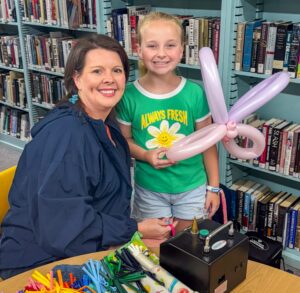Start spring gardens with healthy seeds and transplants
By By Steve Strong / area horticulture extension agent
March 10, 2004
The first week or two of March is generally the time when many gardeners begin preparing their beds for spring planting. It is a time to begin sowing seeds for new vegetables and flowers, and to get a head start on everyone else in the neighborhood for that first red, ripe tomato of the growing season.
Most summer vegetable and flower varieties are classified as annuals, plants that grow from seeds into mature "adults" in a single season, producing flowers and fruit and then dying back with the onset of frost. While the time period varies, annuals require between 60 and 75 days from seed to start producing blooms and setting fruit.
This time frame also coincides with the first recommended planting dates in our Zone 7 (where the last hard freeze occurs around the last week in March).
Although young annuals can be transplanted into garden beds before April 1, they will likely need special frost protection to prevent stunting. So, savvy gardeners will usually leave the seedlings in containers until around Good Friday.
Some important things to remember when growing plants from seeds are to start with fresh, pest-free growing media (potting soil), and clean sterile containers. This reduces the chances of seedling root rots (called damping-off diseases) that often attack young sprouts. It also minimizes the odds for attack from critters that over-winter in garden soils.
Next, be sure to provide a growing area with plenty of sunlight and a constant room temperature. Lack of sunlight is the most common cause of young seedlings becoming stretched with weak stems that flop over, and temperatures below 50 degrees (especially at night) can stunt seedlings and promote disease problems.
Planting depth can also be critical, and the general rule is to plant seeds no deeper than twice their diameter this also works well for bulb plants, too. Small seeds that are too tiny to be handled separately can simply be scattered over the soil surface and lightly watered in with no extra soil coverage at all. The sprouts will work their root systems into the media as the seeds begin to germinate.
Watering young plants can be tricky while they are still small, and it may help to use a watering can or a low-pressure hose nozzle to prevent seedling injury. Keep the potting media evenly moist for several days until seeds germinate and leaves begin to form, then alternate between thorough watering and drying soil cycles to encourage the roots to grow downward in search of water.
Seeds of most vegetables and flowers may be broadcast into a "flat" of growing media, and then transplanted into larger individual pots once they sprout and produce "true" leaves. True leaves are the second and third sets that form above the first rounded "seed" leaves (cotyledons), and it helps in seedling survival to wait until the true leaves are visible before transplanting.
Seedlings can be thinned out and transplanted directly into rows or planting beds once true leaves have emerged, but the advantage to placing in containers first is to allow the new plants to grow a more vigorous root system. Plants in pots can easily be moved when there is danger of frost, and they are also better protected in the early growth stages from pests and disease.
More information on starting healthy transplants can be found at the MSU Extension Web site, www.msucares.com. Each county Extension office provides free publications on vegetables, flowers, or just about anything you want to plant in the garden, so stop by for a visit.
One last tip on starting young plants: Take it easy with the fertilizer and have your soil tested to find out what kind of nutrition is best for your crop.








